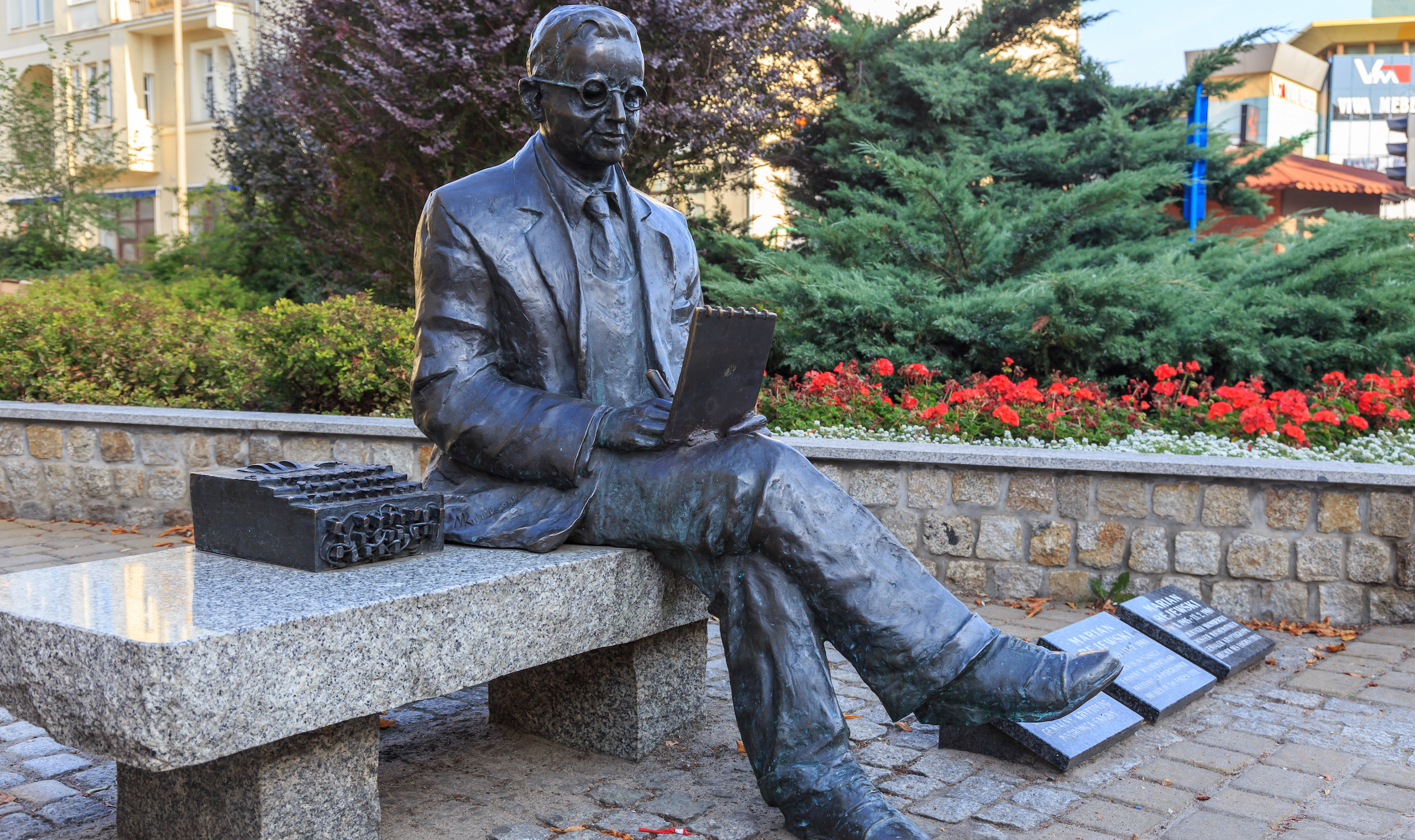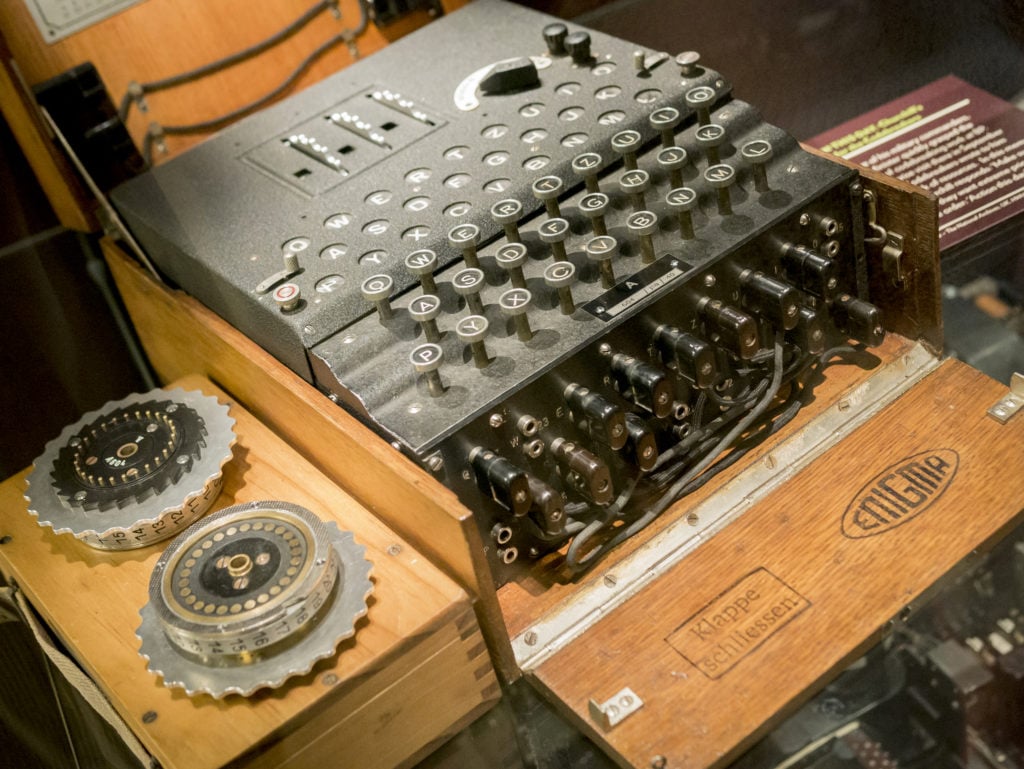In 1918, German scientist Arthur Scherbius developed a code-generating machine, called the Enigma, that would prove to be incredibly resistant to code-breaking efforts—and likely would have handed victory in WWII to the Axis powers, if not for the intervention of a team of Allied heroes.
Although the Enigma was developed in 1918, it wasn’t thoroughly tested and ready for use until 1923. At first, only commercial models—those ostensibly intended for nonmilitary use—were available. These machines were quite sophisticated, but the German military command wanted even stronger cryptography at their disposal, so they committed enormous resources to the development of a military-only version of the Enigma.1
The first versions of the Enigma machine were mechanical devices similar in appearance to an old cash register, with twenty-six keys (for the letters A–Z) and three internal wheels, with the same twenty-six letters printed on each. Each wheel would be set to a specific position, determined by a master code that would be changed daily. Each time a key was pressed on the machine, the rightmost wheel would rotate one position and print a letter other than the one pressed. Once the wheel had rotated through all twenty-six letters, the adjacent wheel would be advanced one position and the cycle would begin anew. Decoding Enigma messages required another machine set with the same key cipher, whereby the encoded message could be typed in and converted back to its original text. Later, more sophisticated models would employ additional wheels and more complicated mechanical processes to make the code even more formidable.2
. . .
You might also like
Endnotes
1. Crypto Museum, “History of the Enigma,” January 27, 2019, https://www.cryptomuseum.com/crypto/enigma/hist.htm.
2. Dirk Rijmenants, “Technical Details of the Enigma Machine,” Cipher Machines and Cryptology, http://users.telenet.be/d.rijmenants/en/enigmatech.htm (accessed July 1, 2019).
3. Crypto Museum, “Bombe,” January 3, 2019, https://www.cryptomuseum.com/crypto/bombe/index.htm; Marian Rejewski, “The Mathematical Solution of the Enigma Cipher,” Appendix E to Wladyslaw Kozaczuk, Enigma (New York: Hippocrene Books, 1984), 289; Crypto Museum, “History of the Enigma.”
4. Schmidt’s motives appear primarily to have been financial. Nonetheless, he deserves some credit for his role in helping the Allies win the war.
5. Crypto Museum, “History of the Enigma.”
6. Francis Harry Hinsley and Alan Stripp, Codebreakers: The Inside Story of Bletchley Park (Oxford: Oxford University Press, 2001), 90.
7. Crypto Museum, “History of the Enigma.”
8. National Security Agency, “Regierungs-Oberinspektor Fritz Menzer: Cryptographic Inventor Extraordinaire,” https://www.nsa.gov/Portals/70/documents/news-features/declassified-documents/cryptologic-quarterly/Regierungs_Oberinspektor.pdf (accessed July 1, 2019); Crypto Museum, “History of the Enigma.”
9. Andrew Lycett, “Breaking Germany’s Enigma Code,” BBC History, February 17, 2011, https://www.bbc.co.uk/history/worldwars/wwtwo/enigma_01.shtml.















